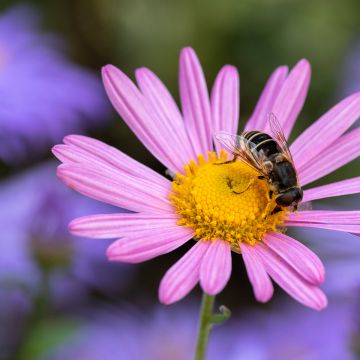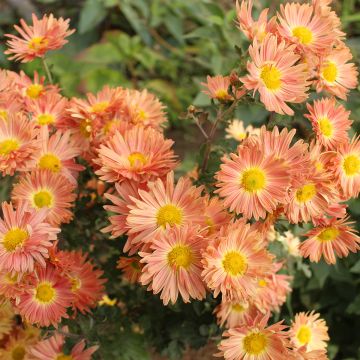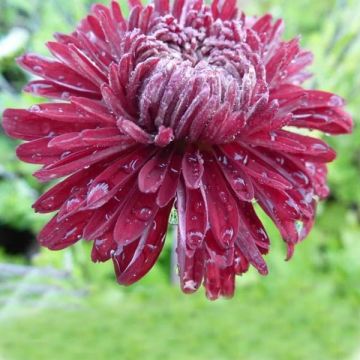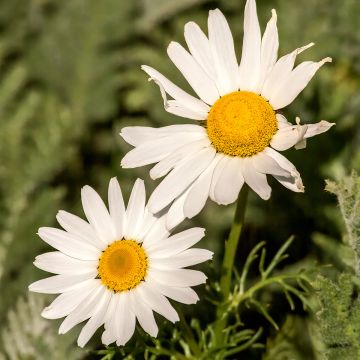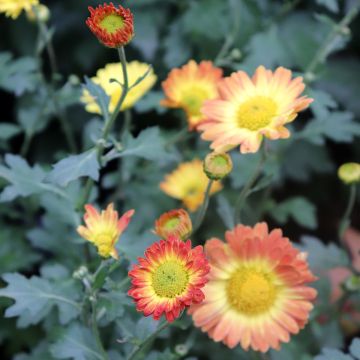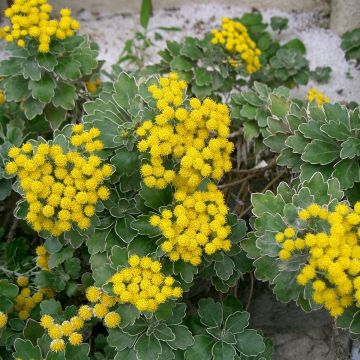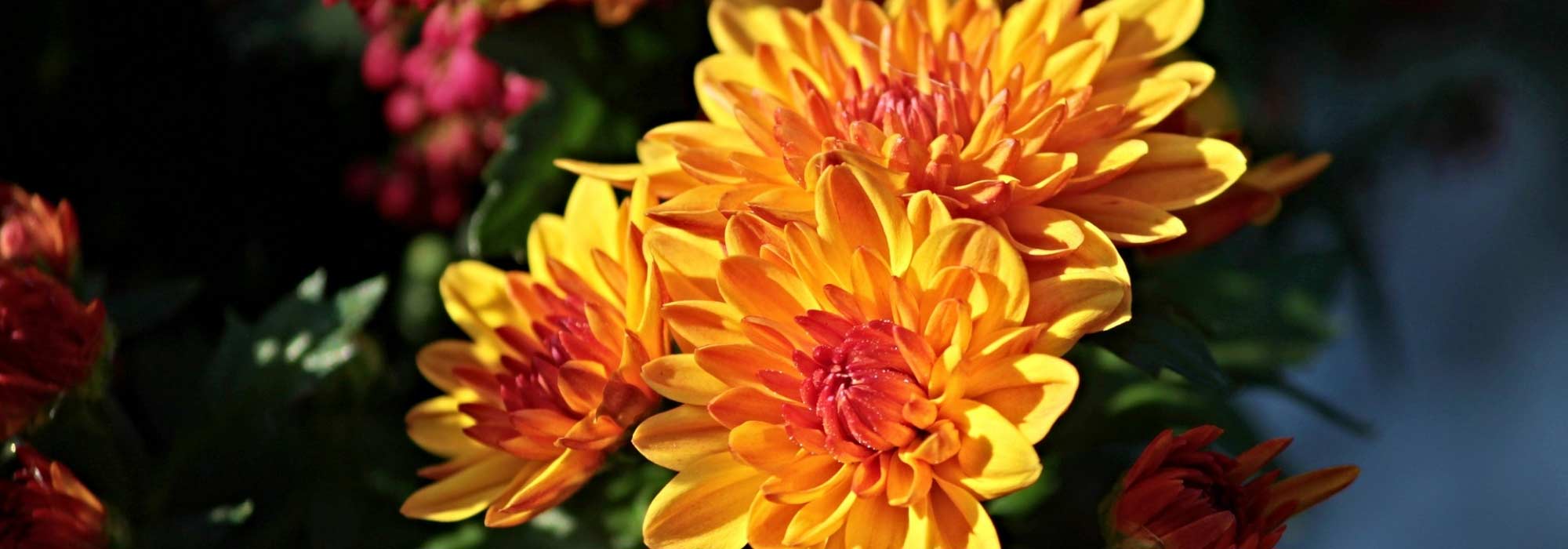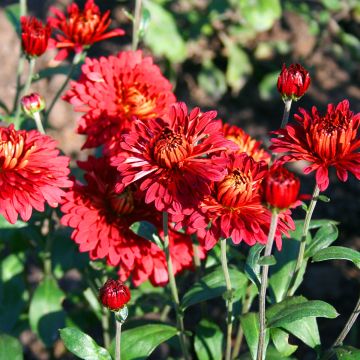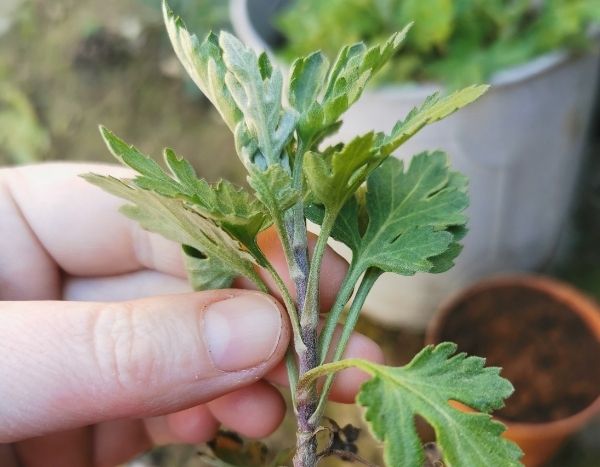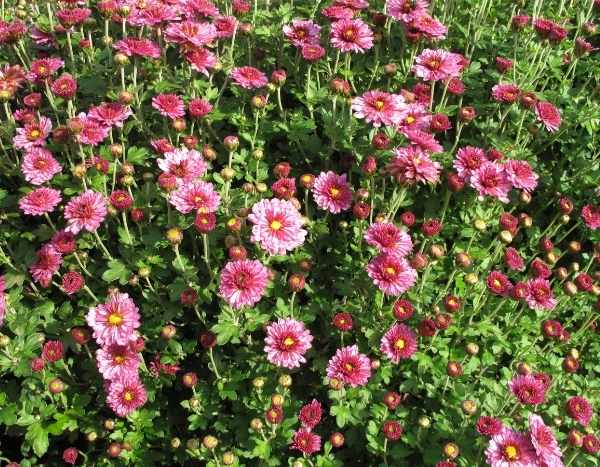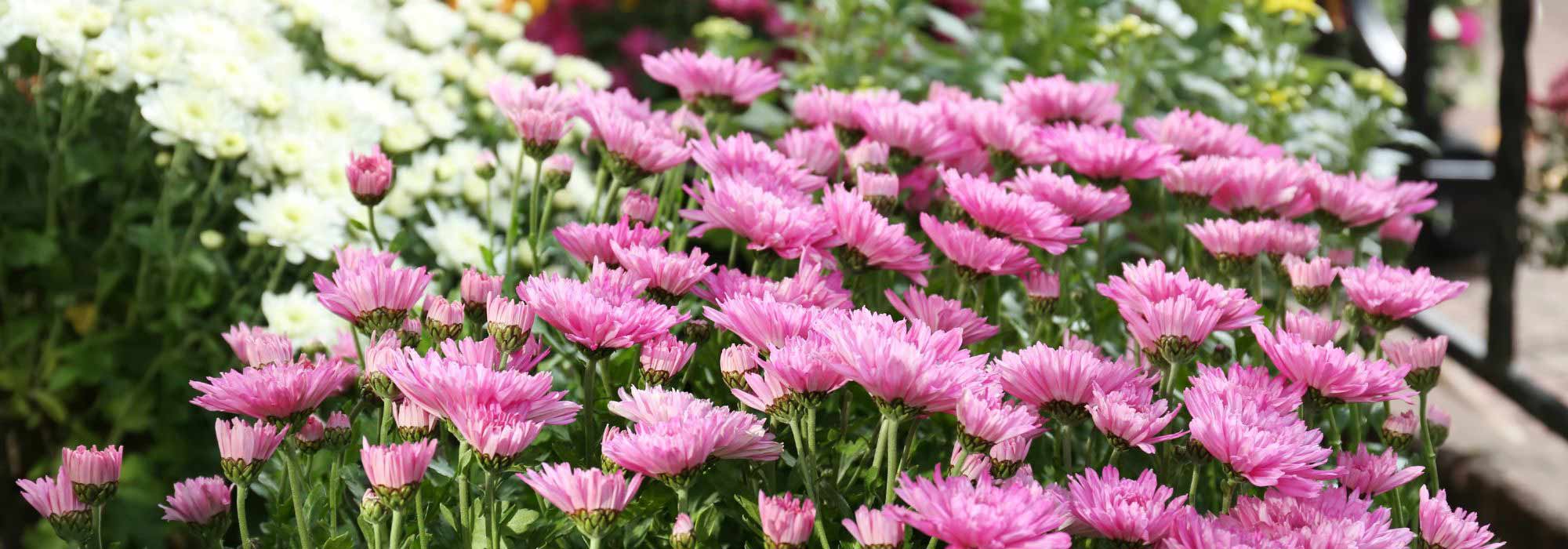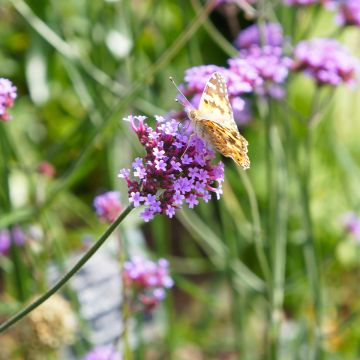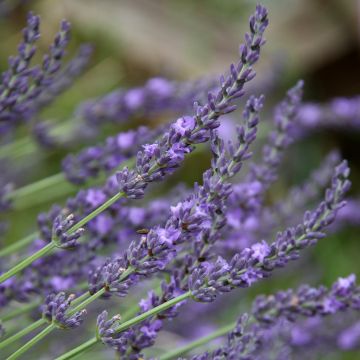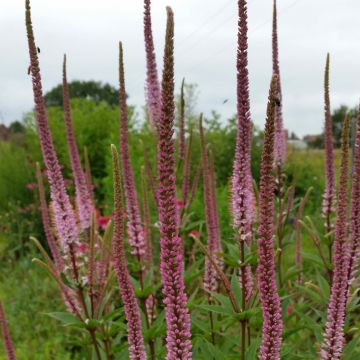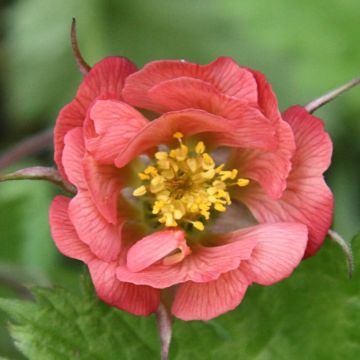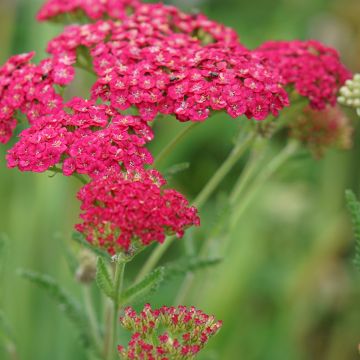

Chrysanthemum indicum Nantyderry Sunshine
Chrysanthemum indicum Nantyderry Sunshine
Chrysanthemum x indicum Nantyderry Sunshine
Garden Mum, Indian Chrysanthemum, Florist's Daisy
Special offer!
Receive a €20 voucher for any order over €90 (excluding delivery costs, credit notes, and plastic-free options)!
1- Add your favorite plants to your cart.
2- Once you have reached €90, confirm your order (you can even choose the delivery date!).
3- As soon as your order is shipped, you will receive an email containing your voucher code, valid for 3 months (90 days).
Your voucher is unique and can only be used once, for any order with a minimum value of €20, excluding delivery costs.
Can be combined with other current offers, non-divisible and non-refundable.
Why not try an alternative variety in stock?
View all →This plant carries a 12 months recovery warranty
More information
We guarantee the quality of our plants for a full growing cycle, and will replace at our expense any plant that fails to recover under normal climatic and planting conditions.
Would this plant suit my garden?
Set up your Plantfit profile →
Description
Chrysanthemum or Dendranthema 'Nantyderry Sunshine' is a vigorous garden chrysanthemum, very floriferous, rather early, whose countless small yellow pompom flowers illuminate sunny beds at the end of the season. This perennial will quickly form a tall and beautiful tuft with abundant flowers for several weeks, until the first frost. Moderately hardy, but easy to grow in well-drained garden soil, this variety - award-winning in England - forms superb combinations with all the colours of autumn.
Chrysanthemum x indicum is an herbaceous and rhizomatous perennial with a woody stump, from the Asteraceae family. It is a hybrid obtained by crossing different species from East Asia (C.indicum) and Siberia (C.zawadskii). The 'Nantyderry Sunshine' cultivar, discovered in Wales by Glynne Clay in the 1980s, is said to be a seedling of the 'Mei-Kyo' cultivar found among plants of 'Bronze Elegance' chrysanthemums. The plant forms a 90 cm (35in) tall bush with a width of 60-70 cm (24-28in), capable of spreading from its stump. The foliage consists of ramified leafy stems, woody at the base. It grows quickly. The flowering, early for a chrysanthemum, extends from September to late October-early November. The plant produces numerous flowers gathered in small double heads, in the shape of pompoms, measuring 3 cm (1in) in diameter, grouped in small bouquets at the top of the leafy stems. The central disc is a bright dark yellow, the ligules on the periphery, thin and numerous, are a very bright lemon yellow. Before withering, the heart of the flowers turns orange-yellow. The leaves are triangular-ovate, roughly divided into 5 lobes and measure up to 5 cm (2in) in length. They have toothed edges, of a slightly dull dark green colour, and are villous underneath. The above-ground vegetation, deciduous, dries up in winter and regrows in spring. Its stump, very perennial, will live a long time in the garden. Its hardiness is evaluated at -10 °C by the Royal Horticultural Society in Britain.
Garden chrysanthemums offer immense resources during a somewhat nostalgic time of year and their colours blend remarkably well with those of autumn. They can be associated with asters of course, in complementary or matching colors. Their flowering matches that of shrubby salvias, catmints and other gauras. These perennials blend particularly well with grasses such as feather grasses, small miscanthus, Muhlenbergia capillaris and foxtail barley (Hordeum jubatum). They are easily grown in pots to adorn balconies and terraces, and provide excellent cut flowers.
Chrysanthemum indicum Nantyderry Sunshine in pictures
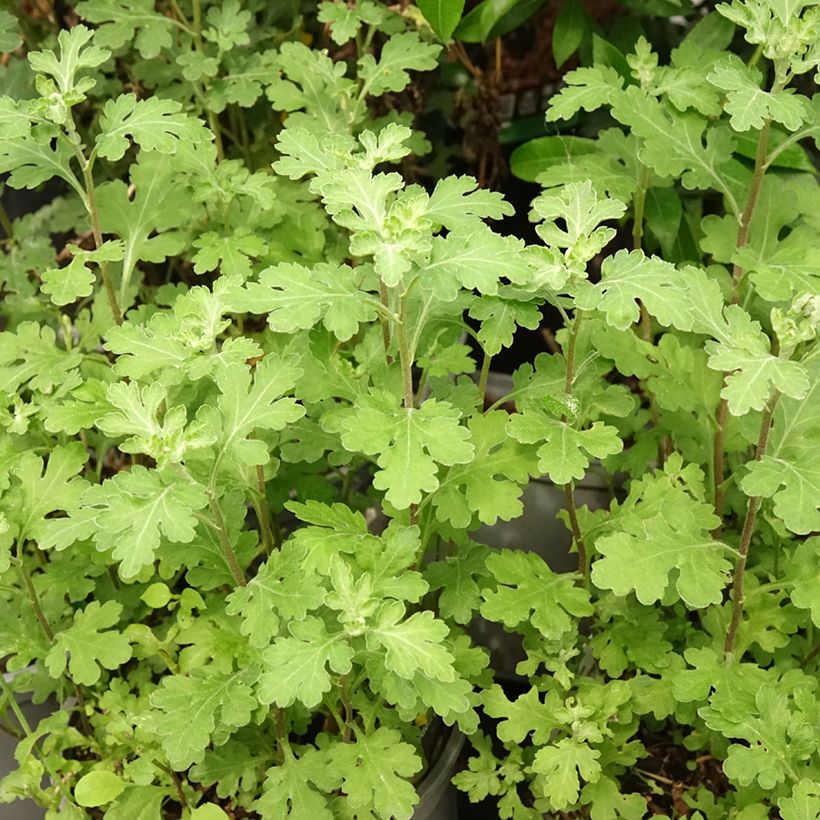

Flowering
Foliage
Plant habit
Botanical data
Chrysanthemum
x indicum
Nantyderry Sunshine
Asteraceae
Garden Mum, Indian Chrysanthemum, Florist's Daisy
Cultivar or hybrid
Other Chrysanthemum
View all →Planting and care
Garden chrysanthemums require a sunny site, ordinary but well-cultivated soil, slightly acidic, neutral or slightly alkaline, rather fertile, not too dry to moist. They are generally hardy. This Nantyderry Sunshine variety seems a bit more sensitive, the RHS (a benchmark for gardeners) estimates that it can withstand -10°C (14°F). To maintain a compact habit, the stems can be shortened in spring to 30 cm (0 to 12in), which will force the plant to branch out. A second pinching in the course of summer allows for a greater number of small flowers. Untamed plants may require staking or support. Water two or three times a week and apply liquid fertiliser for flowering plants every eight days from July until the buds start to colour. This plant performs rather well in partial shade in a warm climate, even in sporadically dry soil, provided it is deep. These plants have few enemies and diseases, except for attacks from gastropods in spring.
Planting period
Intended location
Care
Planting & care advice
This item has not been reviewed yet - be the first to leave a review about it.
Similar products
Haven't found what you were looking for?
Hardiness is the lowest winter temperature a plant can endure without suffering serious damage or even dying. However, hardiness is affected by location (a sheltered area, such as a patio), protection (winter cover) and soil type (hardiness is improved by well-drained soil).

Photo Sharing Terms & Conditions
In order to encourage gardeners to interact and share their experiences, Promesse de fleurs offers various media enabling content to be uploaded onto its Site - in particular via the ‘Photo sharing’ module.
The User agrees to refrain from:
- Posting any content that is illegal, prejudicial, insulting, racist, inciteful to hatred, revisionist, contrary to public decency, that infringes on privacy or on the privacy rights of third parties, in particular the publicity rights of persons and goods, intellectual property rights, or the right to privacy.
- Submitting content on behalf of a third party;
- Impersonate the identity of a third party and/or publish any personal information about a third party;
In general, the User undertakes to refrain from any unethical behaviour.
All Content (in particular text, comments, files, images, photos, videos, creative works, etc.), which may be subject to property or intellectual property rights, image or other private rights, shall remain the property of the User, subject to the limited rights granted by the terms of the licence granted by Promesse de fleurs as stated below. Users are at liberty to publish or not to publish such Content on the Site, notably via the ‘Photo Sharing’ facility, and accept that this Content shall be made public and freely accessible, notably on the Internet.
Users further acknowledge, undertake to have ,and guarantee that they hold all necessary rights and permissions to publish such material on the Site, in particular with regard to the legislation in force pertaining to any privacy, property, intellectual property, image, or contractual rights, or rights of any other nature. By publishing such Content on the Site, Users acknowledge accepting full liability as publishers of the Content within the meaning of the law, and grant Promesse de fleurs, free of charge, an inclusive, worldwide licence for the said Content for the entire duration of its publication, including all reproduction, representation, up/downloading, displaying, performing, transmission, and storage rights.
Users also grant permission for their name to be linked to the Content and accept that this link may not always be made available.
By engaging in posting material, Users consent to their Content becoming automatically accessible on the Internet, in particular on other sites and/or blogs and/or web pages of the Promesse de fleurs site, including in particular social pages and the Promesse de fleurs catalogue.
Users may secure the removal of entrusted content free of charge by issuing a simple request via our contact form.
The flowering period indicated on our website applies to countries and regions located in USDA zone 8 (France, the United Kingdom, Ireland, the Netherlands, etc.)
It will vary according to where you live:
- In zones 9 to 10 (Italy, Spain, Greece, etc.), flowering will occur about 2 to 4 weeks earlier.
- In zones 6 to 7 (Germany, Poland, Slovenia, and lower mountainous regions), flowering will be delayed by 2 to 3 weeks.
- In zone 5 (Central Europe, Scandinavia), blooming will be delayed by 3 to 5 weeks.
In temperate climates, pruning of spring-flowering shrubs (forsythia, spireas, etc.) should be done just after flowering.
Pruning of summer-flowering shrubs (Indian Lilac, Perovskia, etc.) can be done in winter or spring.
In cold regions as well as with frost-sensitive plants, avoid pruning too early when severe frosts may still occur.
The planting period indicated on our website applies to countries and regions located in USDA zone 8 (France, United Kingdom, Ireland, Netherlands).
It will vary according to where you live:
- In Mediterranean zones (Marseille, Madrid, Milan, etc.), autumn and winter are the best planting periods.
- In continental zones (Strasbourg, Munich, Vienna, etc.), delay planting by 2 to 3 weeks in spring and bring it forward by 2 to 4 weeks in autumn.
- In mountainous regions (the Alps, Pyrenees, Carpathians, etc.), it is best to plant in late spring (May-June) or late summer (August-September).
The harvesting period indicated on our website applies to countries and regions in USDA zone 8 (France, England, Ireland, the Netherlands).
In colder areas (Scandinavia, Poland, Austria...) fruit and vegetable harvests are likely to be delayed by 3-4 weeks.
In warmer areas (Italy, Spain, Greece, etc.), harvesting will probably take place earlier, depending on weather conditions.
The sowing periods indicated on our website apply to countries and regions within USDA Zone 8 (France, UK, Ireland, Netherlands).
In colder areas (Scandinavia, Poland, Austria...), delay any outdoor sowing by 3-4 weeks, or sow under glass.
In warmer climes (Italy, Spain, Greece, etc.), bring outdoor sowing forward by a few weeks.































